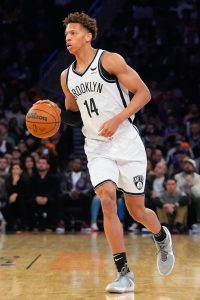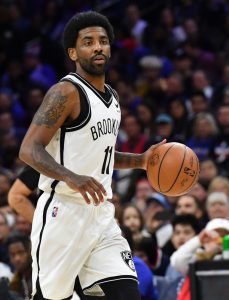It has been 10 days since the NBA’s 2022 playoffs tipped off, and 15 of 16 teams that made the first round are still alive. The one playoff team whose season is over? The Nets, viewed by many fans, league observers, and oddsmakers as the championship favorites coming into the 2021/22 campaign.
While a handful of other clubs are on the verge of elimination, Brooklyn is the only one that was swept out of the playoffs. As a No. 7 seed, the Nets weren’t the title favorites entering the playoffs, but their swift elimination is a reminder that the battle for the 2022 crown remains wide open.
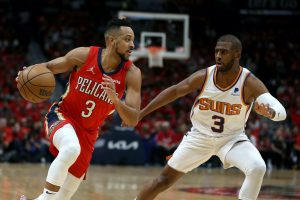 The early results in the Western Conference have provided another reminder of the unpredictable nature of this year’s postseason. The Suns and Grizzlies were the NBA’s two most dominant teams during the regular season, but they now found themselves tied up at 2-2 against a pair of play-in teams, the Pelicans and Timberwolves. Devin Booker is injured for Phoenix and Ja Morant isn’t at 100% for Memphis, but the fact that both clubs are fighting for their playoff lives in the first round is still a surprise.
The early results in the Western Conference have provided another reminder of the unpredictable nature of this year’s postseason. The Suns and Grizzlies were the NBA’s two most dominant teams during the regular season, but they now found themselves tied up at 2-2 against a pair of play-in teams, the Pelicans and Timberwolves. Devin Booker is injured for Phoenix and Ja Morant isn’t at 100% for Memphis, but the fact that both clubs are fighting for their playoff lives in the first round is still a surprise.
The Warriors have looked like the best team in the West early in the playoffs, though their Game 4 loss to the Nuggets showed they’re not exactly unbeatable either. The Mavericks, meanwhile, hold a 3-2 lead over the Jazz despite not having All-NBA guard Luka Doncic available until Game 4 — with a healthy Doncic, they look like a threat to make some noise beyond the first round, but they’ll have to get past Utah first.
In the East, the Heat and Bucks briefly looked vulnerable after losing Kyle Lowry and Khris Middleton, respectively, but they’ve since reasserted control over the Hawks and Bulls and hold 3-1 series leads. Miami and Milwaukee remain strong threats to make deep postseason runs, especially if they get their injured stars back sooner rather than later.
The Sixers looked like they were putting all together during the first three games of their series vs. the Raptors, but after two straight losses, they’re no longer even a lock to get out of the first round. Up 3-2, Philadelphia remains a strong favorite to get past Toronto, but Joel Embiid‘s thumb injury is clearing bothering him, and James Harden hasn’t been at his best in the series, averaging 18.4 PPG on 37.3% shooting. If their two superstars aren’t in peak form, the 76ers’ upside is limited.
Unlike the Sixers, the Celtics didn’t take their foot off the gas pedal during their four-game sweep of Brooklyn. Boston looked like the best team in the Eastern Conference in the second half and has carried that success into the playoffs. They’ll have to make sure they don’t get rusty during their current layoff as they prepare for what will likely be a matchup with the defending champs.
Ten days into the postseason, we want to know what you think. Which teams do you expect to meet in the NBA Finals? Have your picks changed at all based on what you’ve seen in the last week-and-a-half? Are there any lower seeds you like as sleepers to make the conference finals, or high seeds you think are in real trouble?
Head to the comment section below to weigh in with your thoughts on the playoffs!
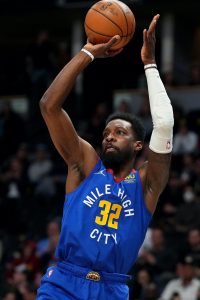 The salary limitations that apply to Non-Bird rights are more severe than those pertaining to Bird rights or Early Bird rights, so in many cases, the Non-Bird exception may not be enough to retain a well-regarded free agent. For instance, the Nets held
The salary limitations that apply to Non-Bird rights are more severe than those pertaining to Bird rights or Early Bird rights, so in many cases, the Non-Bird exception may not be enough to retain a well-regarded free agent. For instance, the Nets held 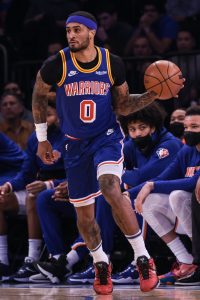 As is the case with Bird rights, a player’s clock stops when he’s released by a team and clears waivers, but it would pick up where it left off if he re-signs with that same team down the road without joining another club in the interim. For instance,
As is the case with Bird rights, a player’s clock stops when he’s released by a team and clears waivers, but it would pick up where it left off if he re-signs with that same team down the road without joining another club in the interim. For instance, 
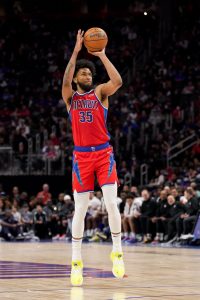 He changes teams via trade. For instance, the Pistons will hold
He changes teams via trade. For instance, the Pistons will hold 